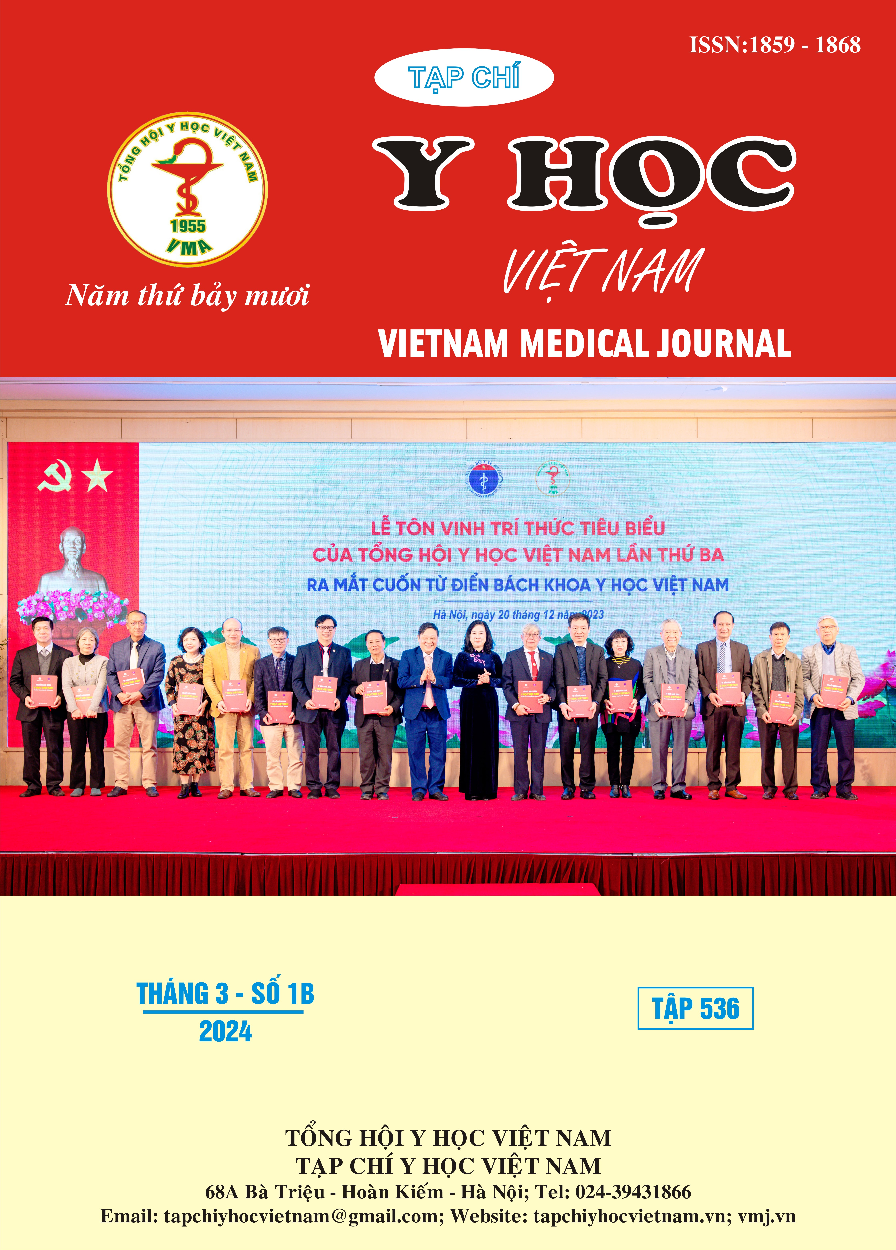EVALUATION OF THE RESULTS OF HIGH-GRADE CERVICAL LESION TREATMENT BY CONIZATION METHOD AT HUNG VUONG HOSPITAL FROM 2018-2020
Main Article Content
Abstract
Introduction: Early screening through cytology and HPV screening can help identify precancerous cases to prevent their progression into invasive cervical cancer which can be treated by early interventions. These early interventions may include minimally invasive methods such as conization to remove the damaged tissue from the cervix. Aim Determining the success rate of high-grade Cervical Intraepithelial Neoplasia (CIN) lesions treated through conization methods. Identifying factors associated with treatment outcomes in conization for high-grade Cervical Intraepithelial Neoplasia (CIN) lesions. Methods Cross-sectional study, sample size 220 cases undergoing initial conization in Hung Vuong hospital from 2018 to 2022. Results The success rate of treating high-grade Cervical Intraepithelial Neoplasia (CIN) lesions through conization after 30 months is 87.7% (95% CI: 83.36-92.1%). The failure rate is 12.3%. Factors associated with conization treatment outcomes for CIN lesions: Age ≥ 38 years increases the risk of treatment failure with an odds ratio (OR) of 1.32 (95% CI: 1.22-3.95). This difference is statistically significant with p=0.012 < 0.05. Postmenopausal status increases the risk of treatment failure with an odds ratio (OR) of 1.18 (95% CI: 1.07-3.7). This difference is statistically significant with p=0.004 < 0.05. HPV infection post-conization significantly raises the risk of treatment failure by 5.8 times compared to HPV-negative cases, with an odds ratio (OR) of 5.8 (95% CI: 3.69-8.27). This difference is statistically significant with p < 0.001 < 0.05. Conclusion: Treatment of high-grade cervical lesions using the loop electrosurgical excision procedure (LEEP) or normal knife conization is associated with a high success rate. Advanced age, postmenopausal status, and post-conization HPV infection are identified as factors that increase the risk of treatment failure for conization procedures.
Article Details
References
2. Đỗ Thi Lệ Chi (2009), "Điều trị các tổn thương tân sinh trong biểu mô cổ tử cung độ II và III bằng phương pháp khoét chóp sử dụng vòng cắt đốt điện"(Bệnh viện Từ Dũ).
3. Lưu Đức Tâm (2017), Nghiên cứu tỷ lệ nhiễm Human Pappiloma virus, một số yếu tố liên quan và kết quả điều trị các tổn thương cổ tử cung ở phụ nữ Tp. Cần Thơ, Trường Đại học Y Dược Huế
4. Phạm Hồ Thúy Ai (2018), "Tỷ lệ nhiễm HPV sau khoét chóp cổ tử cung bằng vòng điện ở phụ nữ có tân sinh trong biêu mô cổ tử cung độ 2-3", Luận văn chuyên khoa cấp II(Đại học Y dược Thành Phố Hồ Chí Minh).
5. Phạm Trí Hiếu Nguyễn Văn Thắng (2019), "Nhận xét kết quả của kỹ thuật LEEP điều trị tổn thương cổ tử cung tại Vênh viện Phụ Sản Trung Uơng", Tạp chí Phụ Sản. 2, tr. tr 143-147. 2, tr. 143-147
6. Trần Thị Kim Anh, Cao Ngọc Thành Hoàng Việt (2015), "Đánh giá kết quả điều trị các tổn thương tiền ung thư tại Bệnh viện Trương Ương Huế", Tạp chí Phụ Sản. Tâp 13 (Hội Phụ Sản Việt Nam), tr. 99-102
7. Darlin L Henic E Asciutto KC, Forslund O, et al (2016), "Follow up with HPV test and cytology as test of cure, 6 months after conization, reliable 2016", Acta Obstetricia et Gynecologica Scandinavica. 95, tr. 1251-1257
8. Kouichiro Kawano (2016), "Identification of appropriate cone length to avoid positive cone margin in high grade cervical intraepithelial neoplasia", Gynecol Oncol. 21, tr. 54
9. Maria B Bruno A Pietro D’ Alessandro, et al (2018), "Loop Electrosurgical Exxcision Procedure versus Cryotheprapy in the Treatment of Cervical Intraepithelial Neoplasia: A Systematic Review and Meta - Analysis of Randomized Controlled Trials", PMC article. Gynecol Minim Invasive Ther, tr. 145-151


